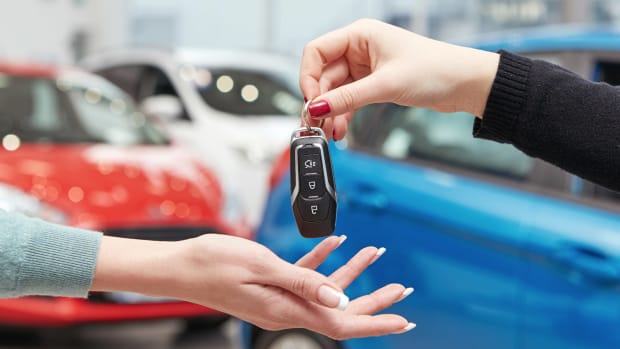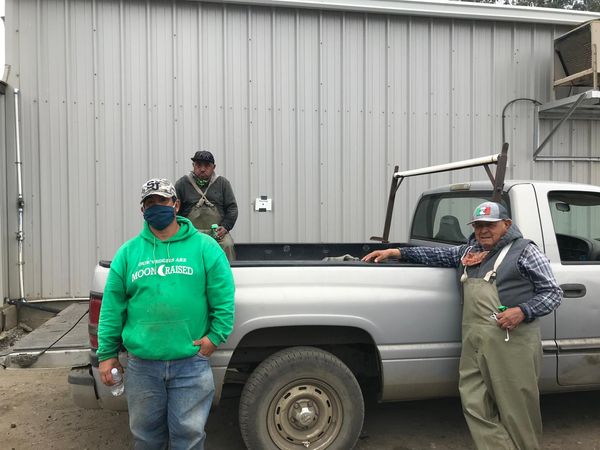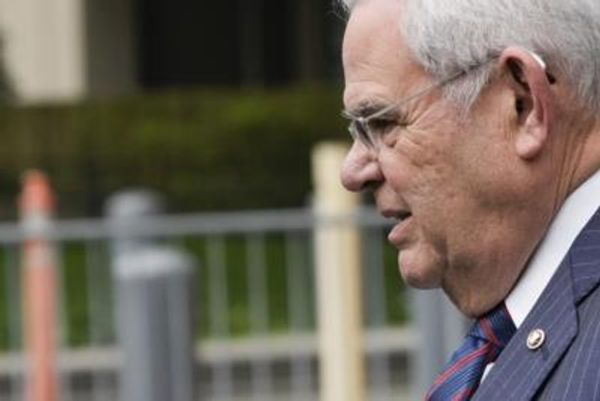
Hey, gang, remember leg warmers, beepers and Rubik's Cubes?
Good. Now do you remember how expensive cars were back then? Because, just like Michael J. Fox, auto prices are going back to the future.
DON'T MISS: JPMorgan CEO Dimon Says Banking Crisis to Be Felt 'for Years to Come'
Vehicle transaction prices, which is the price consumers actually end up paying after any dealer discounts or markups, have been climbing higher and faster since 2020 than any other point in more than 35 years, CNN reported, citing recent data from the Bureau of Labor Statistics.
Car buyers haven’t seen price hikes like these since the 1970s and 80s, but what makes the 2020s unique is how much car prices rose in a short period of time.
Over the used car market’s worst 12 months of the pandemic, the index rose 45%. There’s never been a 12-month period since the BLS began keeping records in 1947 when used car prices have inflated more.

Shutterstock
Prices Not Falling Fast Enough
The consumer price indexes for both new and used cars — the average changes in vehicle transaction price over time — are much higher than they were four years ago in 2019.
The average transaction price of a new car has jumped nearly $12,000 in the past five years, according to data from auto website Edmunds.com. For used cars, the average transaction price is still nearly $9,000 higher than it was in February 2018.
Ivan Drury, the director of insights at Edmunds.com, said prices are coming down, “but not coming down nearly as fast as one would hope,”
“If you look back, or if you’ve ever done a transaction before in your life, all of these numbers are bad,” he told CNN.
The average price of a large pickup truck nationwide was $62,430 in 2022, according to Edmunds.com, while the average midsize car price was $31,381.
Drury said there’s a large market for pickup trucks and SUVs in the south, where BLS data shows new car transaction prices have risen the most since 1987.
Consumers are more interest in larger and more expensive pickup trucks and SUVs. New car buyers want options, as opposed to more stripped-down models available a few years ago.
U.S. Market Hindered
Both of these trends drive up prices and also create incentive for automakers to produce pricier rides.
The used market is still affected by the decline in leasing trade-ins and rental car companies competing with consumers for the same limited supply of three to five-year-old vehicles.
"We’ve got a few things that are really hindering the US market,” Drury said. “I don’t see those going away anytime soon.”
Kelly Blue Book recently reported that prices dropped across the board in February, as both new and used car shoppers saw their outlook improve. But that might not last.
‘We have diverging markets today,” said Charlie Chesbrough, senior economist at Cox Automotive, the parent company of Kelley Blue Book.
Chesbrough said that new-vehicle prices remain high while used retail prices are now in decline.
"New inventory is slowly stabilizing while used supply is falling,” he added. “However, I wouldn’t be surprised to see this situation change later in the spring.”







